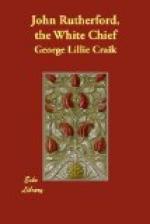[Illustration: Tourist Dept. Photo.
Greenstone axes, with carved wooden handles, and ornamented with dogs’ hair and birds’ feathers.]
This method of procuring fire has, in fact, been in use from the most ancient times, and in all parts of the world. It was, as Lafitau remarks, the very method which was prescribed for rekindling the vestal fire at Rome, when it was accidentally extinguished. This writer describes it as in use also among several tribes of the Indians of South America. Among them, however, it is somewhat more artificially managed than it appears to be among the New Zealanders, inasmuch as their practice is first to make a hole in the wood with the tooth of the acouti, and then to insert in this an instrument resembling a wimble, by the rapid revolution of which the wood is set on fire.
The Baron Alexander de Humboldt gives a similar account of the manner in which the operation appears to have been performed among the ancient Mexicans, who adopted this method of rekindling their fires, on their general extinction at the end of every cycle of fifty-two years.
In a letter which Humboldt has printed at the conclusion of his work, from M. Visconti, it is remarked that we find mention made of this contrivance both in Homer’s “Hymn to Mercury,” and in the “Argonautics” of Apollonius Rhodius. The scholiast of the latter gives a description of the process, which exactly answers to the Mexican delineation.
“On the opposite side of the river,” Rutherford proceeds, “which was about half a mile wide, and not more than four feet deep in any part, about four hundred of the enemy were encamped, waiting for reinforcements. Meanwhile messengers were continually passing from the one party to the other, with messages concerning the war.




